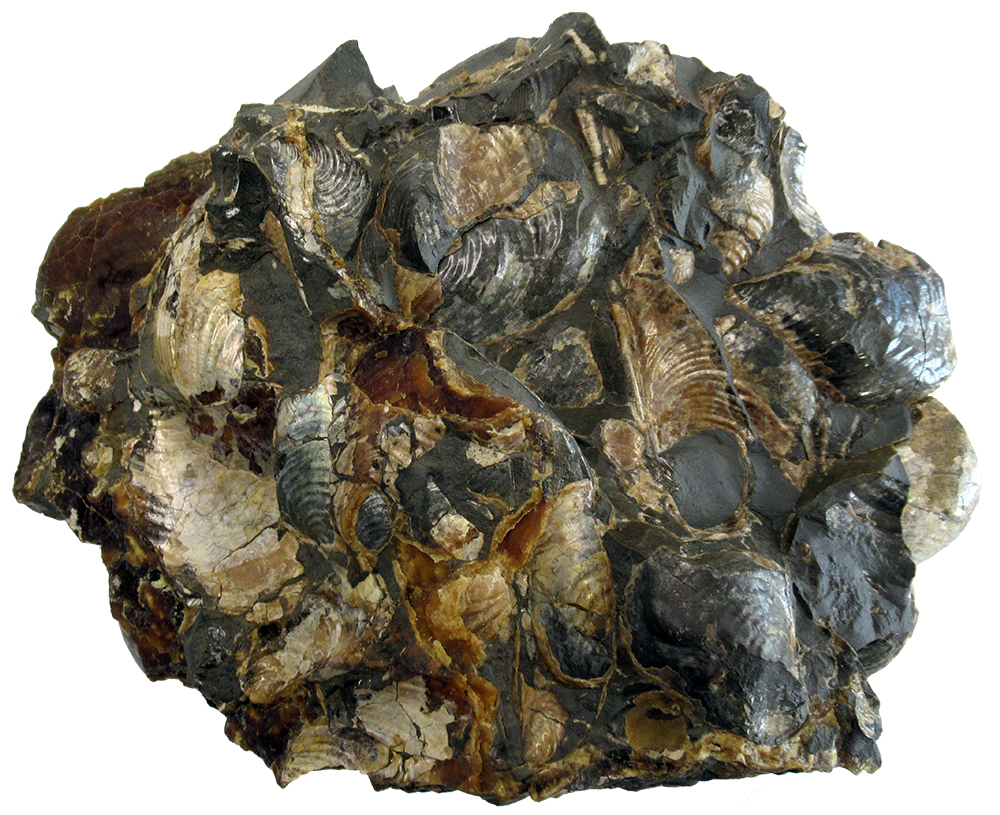
Late Cretaceous (100 - 66 MYA)
This fossil slab is composed almost entirely of Cretaceous-age clams, perhaps ones once momentarily obscured by the shadow of a wading Tyrannosaurus rex. Inoceramus is an extinct genus of marine bivalves related to modern clams. They lived from the Early Jurassic to the end of the Cretaceous. Like non-avian dinosaurs and nearly three fourths of Earth’s life at the time, they met their end in the blaze of an immense meteorite strike and the ensuing ecological chaos that followed in the impact’s wake.
During the Jurassic and Cretaceous, Inoceramus had a nearly global distribution with fossils ranging from Greenland to Antarctica. Diverse Inoceramus communities lived in shallow waters, blanketing the muddy seafloor. All Inoceramus species had thick shells, and some could grow to remarkable size with shells nearly 2 meters across. These latter forms are the largest known bivalves in the fossil record and may have grown in particularly murky water, where an increased gill area would offset the water’s lower oxygen content. While our specimens are much smaller, they still exhibit the prominent growth lines (curved ridges) characteristic of all Inoceramus. The thickness of their shells led to the genus name as Inoceramus means ‘strong pot’ in Greek.
The displayed shells still exhibit the glossy iridescent sheen of modern clams’ nacre (or mother of pearl) layer. For generations, people used nacre layers, composed of organic and inorganic material, from modern mollusks to make buttons. Mother-of-pearl button manufacturing was once so prevalent it resulted in a near-extinction of many mollusk species in the Mississippi River watershed, a decline that has continued to the present due to modern pollutants. This decline in Upper Midwest rivers and lakes mollusk communities now threatens the ecological health of these freshwater ecosystems, as mollusk gills filter and purify freshwater systems but with diminished numbers are no longer as effective as they once were.